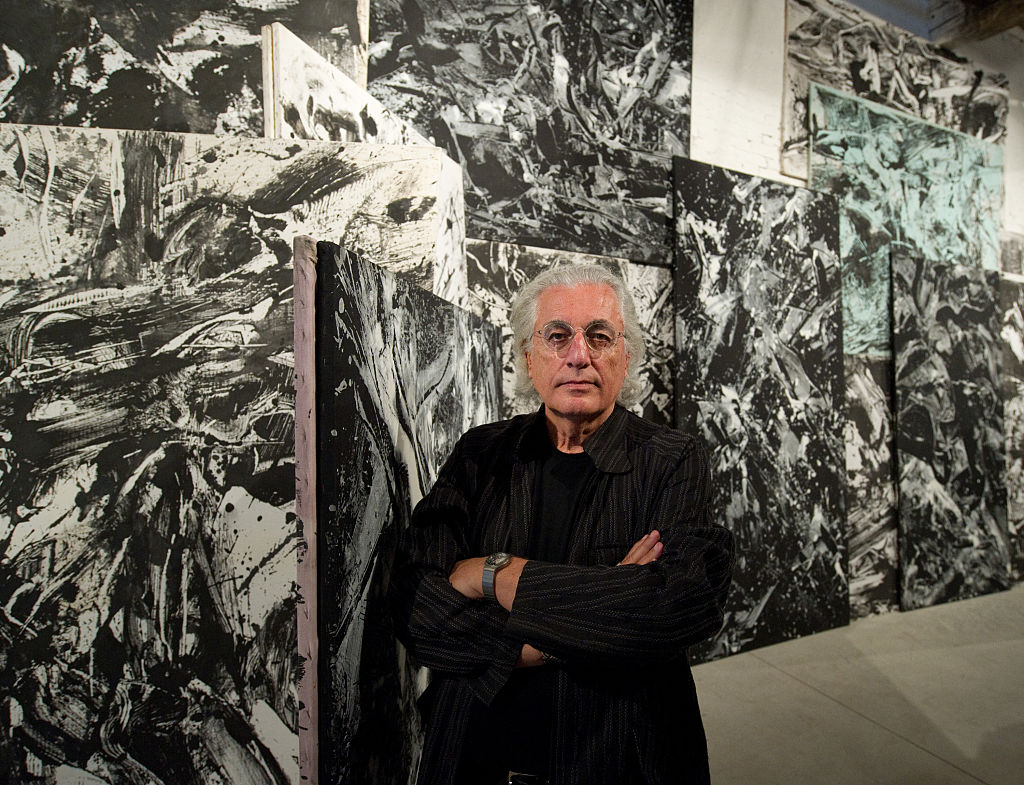Art
Germano Celant, the Towering Italian Art Critic Who Gave the World Arte Povera, Has Died at Age 80 From Coronavirus Complications – artnet News

The widely influential Italian art historian, critic, and curator Germano Celant, who coined the term Arte Povera to describe the radically economical art of Jannis Kounellis, Mario and Marisa Merz, and Giuseppe Penone, among others, has died at age 80 in Milan due to complications from the coronavirus.
His death, which was reported by various Italian news outlets, followed his hospitalization at San Raffaele hospital several weeks ago.
He began exhibiting symptoms after returning home from New York, where he had visited the Armory Show, according to the Italian publication Artibune.
The eminent curator launched his career in 1967, when he published his Arte Povera manifesto, “Notes for a Guerilla War,” in Flash Art magazine, where he championed the work of artists who made “poor art, committed to contingency, to events, to the non-historical, to the present.”
Arte Povera—largely a response to Italy’s post-war industrial culture and economy—contrasted with the bright colors and commercial sensibility of the American Pop Art movement. Celant cast his favored artists, who used unconventional materials such as plywood and rags in their work, in political terms. In the background, as Celant was writing his polemics, a recession in Italy hampered what was previously a period of sustained economic growth, and students influenced by Marx were protesting at universities.
As he helped to build the reputations of anti-establishment artists in the 1960s and ’70s, Celant climbed the ranks of the art world in an increasingly distinguished career.
In 1997, he curated the Venice Biennale, and also held roles as a curator at the Guggenheim, a contributing editor of Artforum and Interview magazines, and was the artistic director of the Prada Foundation in Milan at the time of his death. In October, he announced that he was planned a show dedicated to KAWS.
“I don’t feel like a man of power,” he once said. “I’ve always been interested in the power of art. Artists know that: that’s why they trust me.”
Celant was born in Genoa in 1940. He studied art history at the University of Genoa with the critic Eugenio Battisti, with whom he later worked at the art and design magazine Marcatrè, which was founded by a group of critics including Umberto Eco.
Celant’s exhibition, “Im Spazio,” which was mounted at Genoa’s Galleria La Bertesca in 1967, is often seen as the beginning of the Arte Povera movement. Among his many other significant exhibitions was a 1993 show at the Prada Foundation in which he reimagined “When Attitudes Become Form,” Harald Szeemann‘s influential 1969 show. Other significant exhibitions by Celant included “Italian Metamorphosis, 1943–1968,” which was staged at the Guggenheim in New York.
“The loss of Germano Celant is a catastrophe,” Carolyn Christov-Bakargiev, director of the Castello di Rivoli museum in Turin, wrote in a Tweet. “One of the most serious people in the art world, of the most intelligent, profound.”
Follow artnet News on Facebook:
Want to stay ahead of the art world? Subscribe to our newsletter to get the breaking news, eye-opening interviews, and incisive critical takes that drive the conversation forward.
Art
Duct-taped banana artwork auctioned for $6.2m in New York – BBC.com
[unable to retrieve full-text content]
Art
40 Random Bits of Trivia About Artists and the Artsy Art That They Articulate – Cracked.com
[unable to retrieve full-text content]
40 Random Bits of Trivia About Artists and the Artsy Art That They Articulate Cracked.com
Source link
Art
John Little, whose paintings showed the raw side of Montreal, dies at 96 – CBC.ca
[unable to retrieve full-text content]
John Little, whose paintings showed the raw side of Montreal, dies at 96 CBC.ca
Source link
-
News17 hours ago
Estate sale Emily Carr painting bought for US$50 nets C$290,000 at Toronto auction
-
News17 hours ago
Canada’s Hadwin enters RSM Classic to try new swing before end of PGA Tour season
-
News18 hours ago
All premiers aligned on push for Canada to have bilateral trade deal with U.S.: Ford
-
News17 hours ago
Class action lawsuit on AI-related discrimination reaches final settlement
-
News17 hours ago
Trump nominates former congressman Pete Hoekstra as ambassador to Canada
-
News17 hours ago
Former PM Stephen Harper appointed to oversee Alberta’s $160B AIMCo fund manager
-
News17 hours ago
Ex-student pleads guilty to fatally shooting 3 University of Virginia football players in 2022
-
News17 hours ago
Comcast to spin off cable networks that were once the entertainment giant’s star performers